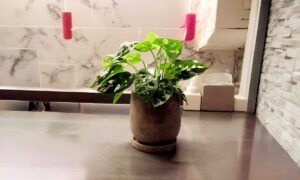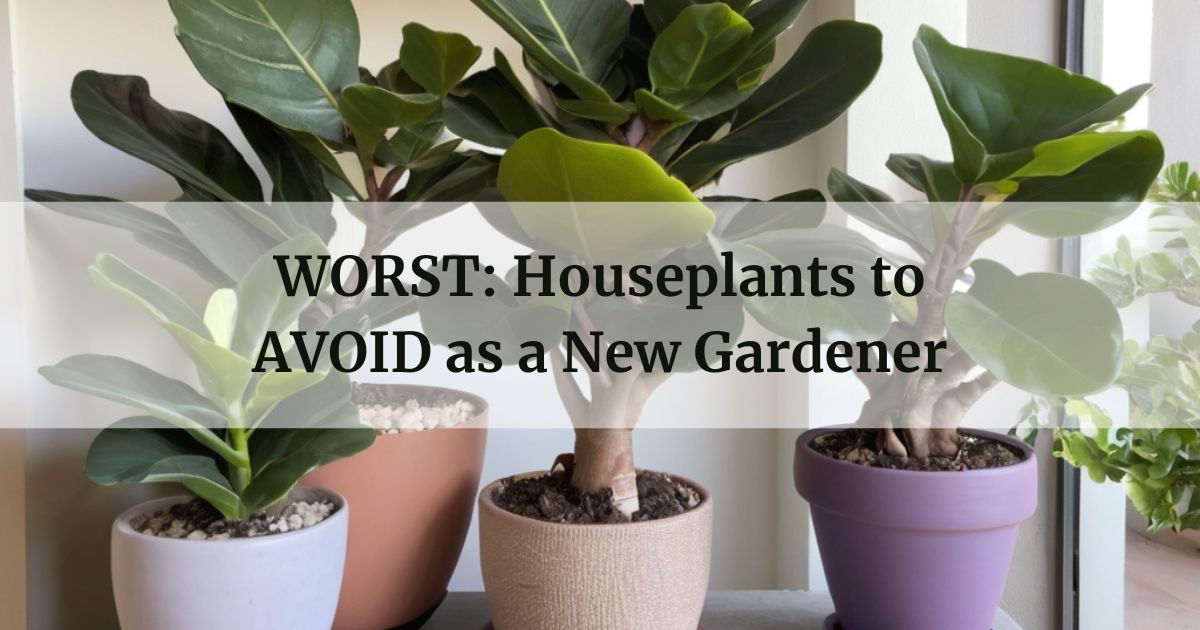
As a gardening newbie, it’s important not to bite off more than you can chew by selecting plants that require special care that may leave you pulling out your hair in frustration. Here are 7 houseplants I’d suggest avoiding if you are a beginner.
In this article
Pink Moth Orchid (Phalaenopsis)
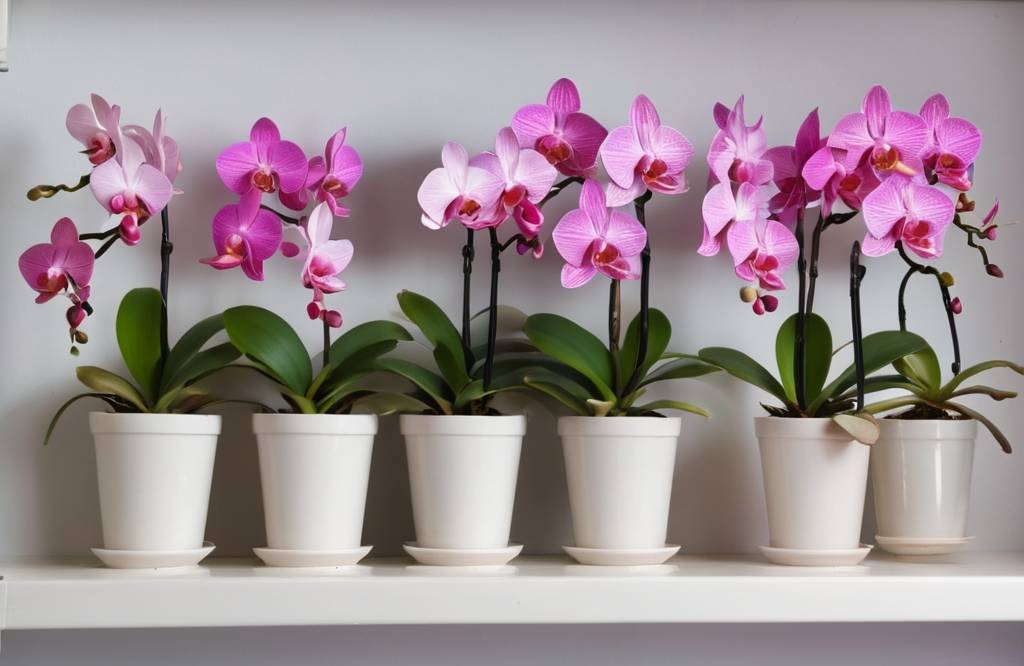
- These elegant orchids are popular, but they can be challenging for beginners.
- They require bright, indirect light and consistent humidity.
- Phalaenopsis orchids need precise watering.
- High humidity levels must also be maintained to prevent shriveling petals.
Pink orchids are beautiful plants whose delicate petals add an air of romance to any indoor space. However, successfully reblooming this orchid requires meeting stringent care demands that challenge even veteran gardeners.
Phalaenopsis orchids need precise watering – allowing their roots to dry out too much can cause them to brown and die, while overly wet soil breeds deadly root rot. Their needs for nutrient-rich water and evenly moist soil necessitate close monitoring that new gardeners may find daunting.
The stress of coaxing prolonged flowering from such fussy exotics could overshadow the joy for those still mastering basics. While the temporary flush of color makes pink moth orchids worth admiring in stores, they may prove discouraging projects for inexperienced gardeners.
Jade Plant (Crassula ovata)

- Jade plants are low-maintenance and thrive in bright light.
- However, they are toxic to pets, so keep them away from curious animals.
Jade plants are quite resilient, thriving on very little water and tolerating low light conditions most homes provide. Their waxy leaves allow them to withstand long periods without watering, making them ideal for beginners still establishing their schedules.
However, care must be taken with pets if keeping jade plants, as many succulents can be toxic. If ingested, the leaves and stems of the jade plant can cause vomiting and diarrhea in cats and dogs.
Its soothing appearance belies this risk, so new plant parents need to take special precautions like placing succulents up high or behind barriers.
For those with furry companions in the home, it may be safer to start with non-toxic varieties like pothos or snake plants until houseplant placement and watering routines are fully mastered.
Fiddle Leaf Fig (Ficus lyrata)
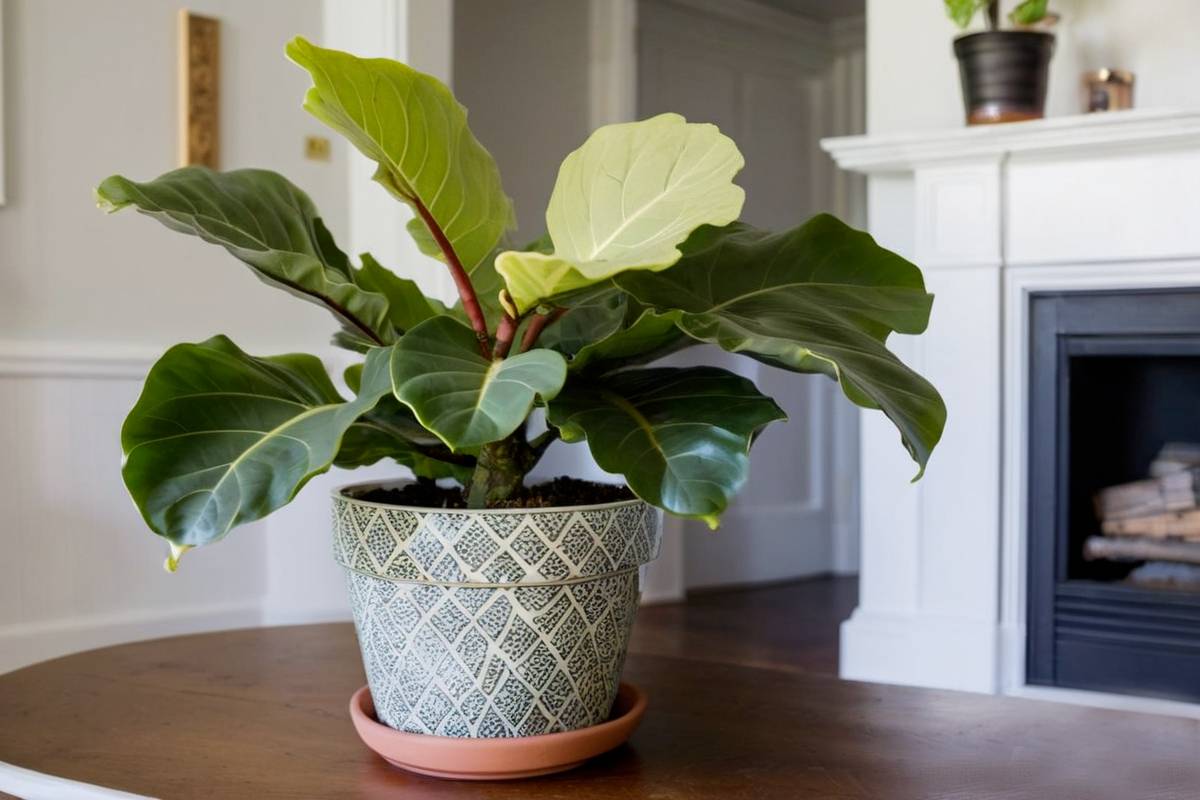
- Fiddle leaf figs are trendy, but they can be high-maintenance.
- They need bright, indirect light, regular watering (but not too much), and occasional pruning.
Fiddle Leaf Fig is certainly an eye-catching addition to any room, with its tall, slender trunk supporting enormous, glossy leaves.
Native to tropical Africa, Ficus lyrata is adapted to warm, humid environments – but indoor heating can leave them vulnerable to pests and dry air.
Their huge, full-bodied leaves also make them very sensitive to temperature and moisture fluctuations.
Too much direct sun, dry air, or inconsistent watering will cause unsightly crisping or dropping of foliage. These trees likewise require specific potting mix and nutrients to thrive. Maintaining steady growing conditions challenges even veteran gardeners.
Fiddle leaf figs demand a high level of upkeep that beginners should avoid until their skills have sharpened.
Carnivorous Plants (Venus Flytrap/Pitcher Plants)

- Carnivorous plants are fascinating but require specific conditions.
- They thrive in bright light, high humidity, and distilled water.
- Research their specific needs before adding them to your collection.
While captivating in appearance, carnivorous plants are among the most delicate species for indoor gardens.
Native to nutrient-poor bogs and wetlands, flytraps, pitcher plants, and their exotic cousins survive by capturing insects for nutrients their habitat lacks. This allows them to flourish where other flora cannot.
However, replicating their specialized growing conditions indoors proves challenging even for experienced growers. They require not just the right soil mineral balance and acidity but also high humidity, bright light, and consistent moisture that simulates their temperate environments. An improper water balance or too much direct sun can quickly cause foliage damage.
Their predatory nature also means special care handling traps and dealing with rotting insect matter.
For newcomers still mastering basics, these finicky exotics are a serious commitment. While thrilling specimens, carnivorous plants serve as projects for only the greenest of green thumbs prepared to research complex demands.
Rubber plant (Ficus elastica)

- Their leathery leaves grow quite large on sculptural, braided trunks – but this also means they can be top-heavy and prone to damage.
- Ficus trees require careful watering to prevent over- or under-watering, both of which can cause dropped leaves and other stress symptoms.
- Their wooden stems are also at risk of burning in strong sunlight.
For novice gardeners still developing their skills, these sensitivities may present needless headaches. Accidental lapses in care are inevitable in the learning process, and Rubber plants are less forgiving of such mistakes than heartier options. As a new gardener still finding their footing, it’s advisable to start with something more resilient that has room for rookie errors without consequence.
More forgiving varieties will allow the focus to remain on building confidence without constant worry.
African Violet (Saintpaulia)
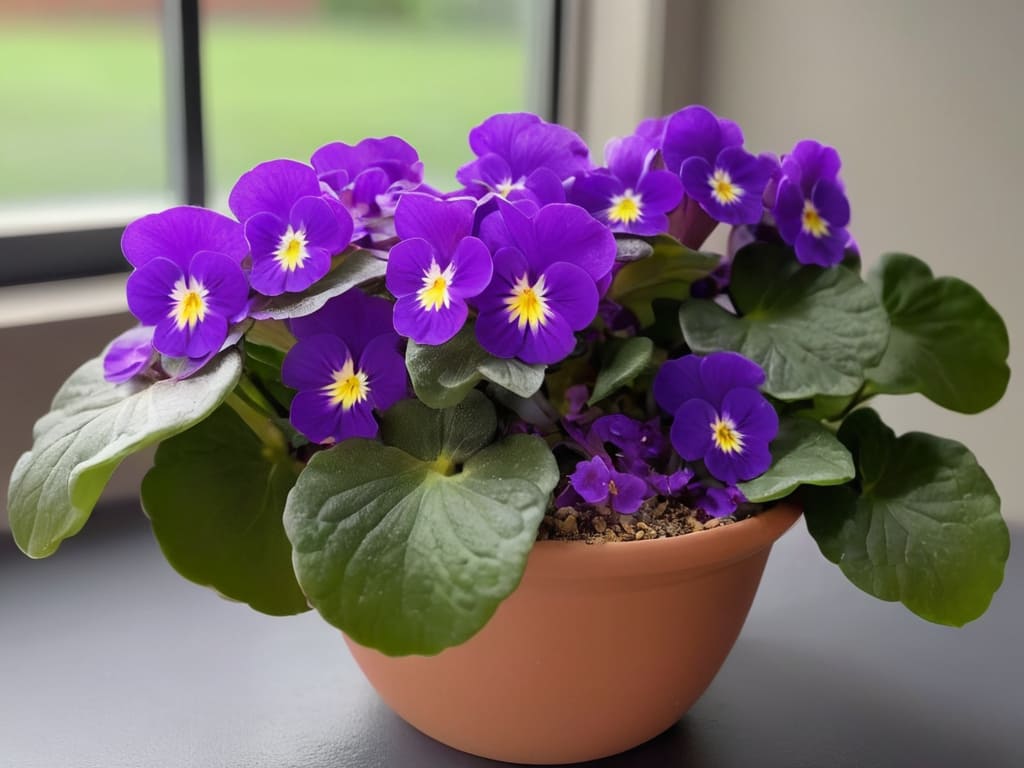
- African violets are beautiful, but they need specific care.
- They prefer bright, indirect light and consistent moisture.
- Avoid getting water on their fuzzy leaves to prevent damage.
- African violets must be grown in soil specially formulated for them.
African violets are a classic favorite houseplant known for their cute, rosette-shaped leaves and colorful blooms. With their delicate petals bursting from the center of lush green foliage, they add a beautiful pop of life to any home. However, their delicate constitution requires precise care that can bewilder even seasoned gardeners.
African violets must be grown in soil specially formulated for them, with the proper balance of nutrients, acidity, and mineral content. Maintaining the right moisture level in this specialized soil is no simple task – the soil must be kept continuously moist without becoming soggy or waterlogged. This means monitoring the soil daily and watering delicately in small amounts. The pH and mineral content of the water used is also crucial, as African violets are very sensitive to any fluctuations.
Ensuring these finicky growing conditions takes a keen eye and green thumb. For new plant parents still getting their feet wet, the hair-pulling stress of reviving wilted violets from the slightest care mistake may outweigh the reward. Their pint-sized planters of colorful beauty are best appreciated once basic houseplant husbandry is mastered.
Orchids
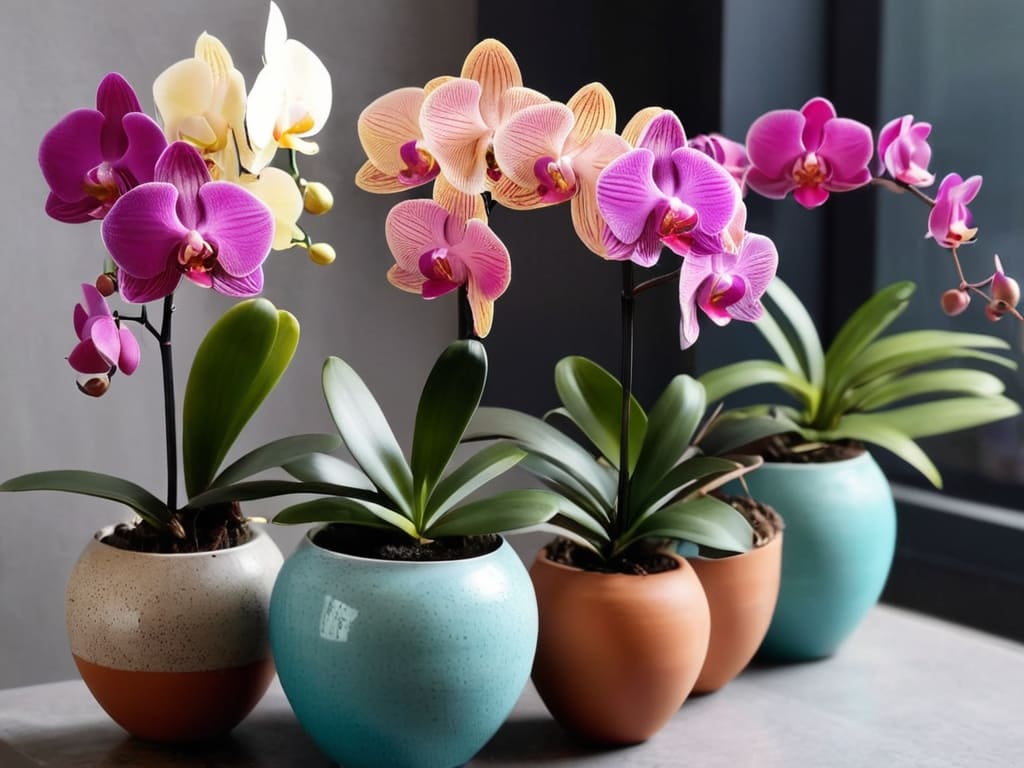
- Elegant orchids are popular, but they can be challenging for beginners.
- They require bright, indirect light and consistent humidity.
- Orchards are also notoriously fussy plants that can frustrate even experienced green thumbs.
- Their roots are also prone to rotting if the delicate moisture level is off by even a small amount.
Orchid roots require very specific care to survive—they must be kept alive without sitting in soggy soil, but the plant also needs to be watered just enough to avoid drying out. This delicate balance is difficult to achieve, as orchids can quickly show signs of over or underwatering.
Keeping flowering orchids healthy while maintaining steady bloom cycles takes an intuitive understanding of their needs. It’s a learning curve that may try the patience of new gardeners. Their stunning blooms definitely don’t come easily for those still developing their skills.
Unless you’re looking for a serious challenge, it’s probably best to save orchids for when your green thumb has more experience under its belt. There are many other beautiful and rewarding houseplants that are much more forgiving of mistakes.
Recommended houseplants for beginner gardeners
With patience and practice, you’ll undoubtedly gain a green thumb in no time. But there’s no need to set yourself up for botanical heartbreak right out of the gate.
Start simple, learn from your inevitable mistakes, and before long you’ll be a pro ready to tackle anything. Stick with foolproof plants at the beginning of your gardening journey for stress-free success.
There are more forgiving options worth considering instead:
- Pothos – Virtually indestructible. Thrives with infrequent watering and tolerates low light. Very difficult to kill.
- Snake plant – Extremely drought tolerant. Can go weeks without water and withstands neglect. Leaf tips may brown if underwatered but plant survives.
- ZZ plant – Low maintenance and forgiving of missed waterings. Leathery leaves hold lots of water. Thrives in low light.
- Spider plant – Prolific bloomer with spiderlet baby plants. Easy to propagate. Very adaptable to conditions.
- Philodendron – Varieties like heartleaf and brasil are tough and can withstand mild neglect.
- Chinese Evergreen – Leathery leaves resist pests and conditions. Colorful varieties bring beauty with very little work.
- Pilea Peperomioides – Cute Chinese money plant. Petite size forgives mistakes. Clumps propagate easily.
- Boston Fern – Filtered light and occasionally misting leaves keeps this fern content. Bounces back from all but severe neglect.
- Janet Craig Dracaena – Striking canes withstand humidity, light fluctuations and infrequent watering lapses.
RECOMMENDED: 9 Indoor Plants that Purify the Air
Happy gardening- and don’t give up!

